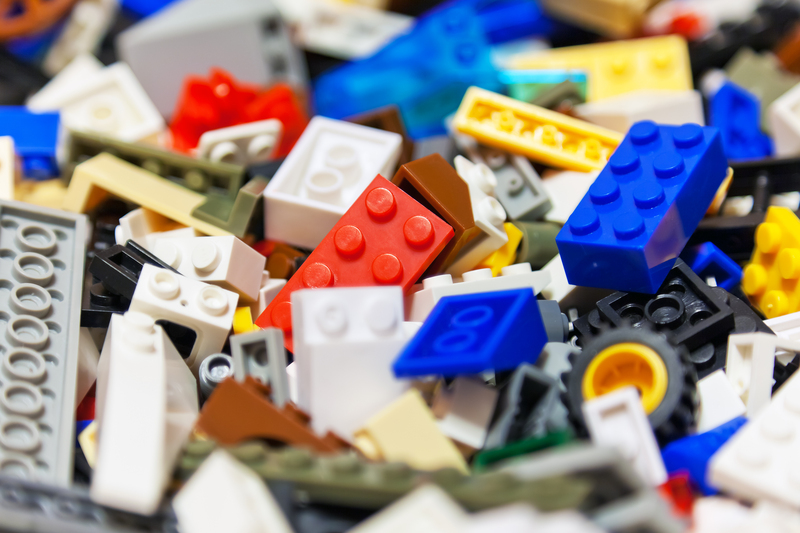Exploring How Plastic is Transformed Through Recycling
Plastic is everywhere in our modern world--from beverage bottles and food packaging to toys and technology. But have you ever wondered what happens to all that plastic when we're done using it? Exploring how plastic is transformed through recycling unveils an intricate journey of innovation, science, and environmental consciousness. In this comprehensive guide, we'll delve into the fascinating processes that give discarded plastics a second life, their impact on the environment, and the steps you can take to participate in this global transformation.

Understanding the Plastic Problem
Plastic pollution is a global crisis. According to estimates, over 8 million tons of plastic waste ends up in our oceans every year. Most plastic items are designed for single use, leading to a massive buildup in landfills and natural habitats. This is where plastic recycling steps in as a critical solution for waste management and sustainable resource usage.
- Reduces landfill waste: Recycling keeps millions of tons of plastics out of landfills each year.
- Saves energy and resources: Transforming recycled plastics requires less energy compared to producing new plastics.
- Decreases pollution: Proper recycling significantly reduces the amount of plastic ending up in oceans and ecosystems.
The Life Cycle of Plastic: From Waste to Wealth
The journey of plastic through the recycling process is both remarkable and complex. How is plastic transformed through recycling? Let's break down the essential stages that convert post-consumer plastic waste into valuable raw materials and products.
1. Collection and Sorting
The first step in plastic transformation through recycling begins with collection. Local municipalities, waste management companies, and recycling centers gather used plastic from households, businesses, and public spaces. This initial collection is pivotal, as the quality and type of plastic collected heavily influence the recyclability.
After collection, plastics are sent to materials recovery facilities (MRFs), where they are sorted by type, color, and resin identification code--the numbered triangle usually visible on the bottom of plastic containers. This sorting process employs both manual labor and advanced technologies like infrared scanners, air jets, and conveyor belts to ensure proper separation.
- Types of Plastics Sorted:
- PET (Polyethylene Terephthalate): Used for beverage bottles and food containers.
- HDPE (High-Density Polyethylene): Found in milk jugs and detergent bottles.
- LDPE (Low-Density Polyethylene): Used in plastic bags and wraps.
- PP (Polypropylene): Common in yogurt cups and straws.
- Other plastics: Including PVC and polystyrene, usually less recyclable.
2. Cleaning and Shredding
Sorted plastics are then cleaned to remove contaminants such as labels, food residue, and adhesives. This step is vital to maintain the integrity of the recycled material and to ensure that the end products meet quality standards.
Once cleaned, plastics are shredded or granulated into small flakes or pellets. This transformation makes it easier to handle and process the material in subsequent recycling stages. The use of water during washing and mechanical agitation during shredding ensures maximum cleanliness and uniformity.
3. Identification and Separation
Not all plastics are created equal. Further identification and separation based on physical and chemical properties are necessary. Techniques such as density separation (using flotation tanks) help segregate plastics with different densities. For example, PET sinks in water, while HDPE floats, facilitating easy separation.
4. Melting and Pelletizing
The cleaned and sorted plastic flakes are then heated in large industrial extruders. Here, the flakes melt and fuse together. This is a critical moment in the transformation of plastic via recycling. The molten plastic is then forced through small holes to form long strands, which are cooled and cut into uniform pellets--referred to as regrind or nurdles.
- PET recycling: Often used in producing new beverage bottles or polyester fibers for clothing.
- HDPE recycling: Transformed into piping, plastic lumber, or new detergent bottles.
- PP and LDPE recycling: Used for automotive parts, bins, and flexible packaging.
5. Converting Pellets into New Products
At this stage, recycled plastic pellets are sold to manufacturers as raw materials. These pellets are melted again and molded or extruded into a dazzling variety of new products--from containers and packaging to textiles, automotive components, construction materials, and even fashion accessories.
- Plastic bottles can become furniture, playground equipment, or building materials.
- Plastic films might reappear as garbage bags or shipping materials.
- Polyester fibers from recycled PET help create everything from carpets to athletic wear.
Advanced Technologies in Plastic Recycling
While traditional mechanical recycling plays a crucial role, advanced plastic transformation techniques are reshaping the industry. These innovative methods allow for the recycling of plastics that were once deemed unrecyclable, thus expanding the scope of sustainable plastic management.
Chemical Recycling
Unlike mechanical recycling, which merely reshapes plastics, chemical recycling breaks plastics down to their molecular building blocks. This process involves chemical reactions (like pyrolysis, solvolysis, or depolymerization) to transform used plastics into monomers or hydrocarbons. These substances can then be repurposed to create new virgin-quality plastics or even fuels.
- Enables the recycling of mixed or contaminated plastics
- Produces high-quality output almost indistinguishable from new plastic
- Contributes to a circular economy by endlessly cycling materials
Biotechnological Innovations
Researchers are exploring bio-recycling, where enzymes or microorganisms are used to break down specific plastics into their basic constituents. These biological methods are particularly promising for plastics that are tough to recycle mechanically or chemically, offering a greener and more energy-efficient alternative.
Benefits of Plastic Transformation through Recycling
Engaging in plastic recycling and transformation comes with a host of advantages, both for the environment and the economy. Here are some compelling benefits:
- Resource conservation: Reduces the need for new, fossil-fuel based raw materials.
- Energy savings: Recycling plastics uses significantly less energy than producing brand new plastics.
- Pollution reduction: Minimizes the detritus entering oceans, rivers, and natural habitats.
- Job creation & economic growth: The recycling industry generates employment and supports a circular economy.
- Reduction of greenhouse gas emissions: Less energy consumption leads to a smaller carbon footprint.
Challenges Facing Plastic Recycling
Despite the numerous benefits, recycling plastic and transforming it into new materials is not without its challenges:
- Contamination: Food residue, non-recyclable items, and mixed materials can reduce the quality or processability of recyclables.
- Downcycling: Some plastics lose quality with each recycling loop, limiting their reuse potential in high-grade products.
- Limited recycling facilities: Not all regions have access to advanced recycling infrastructure.
- Market demand: Recycled plastics must compete with cheap, virgin plastics.
To overcome these issues, global initiatives and investments focus on education, technology innovation, and policies that actively promote recycling and responsible consumption.
How to Participate in the Plastic Recycling Transformation
You can play a vital role in the transformation of plastic waste through recycling. Here are some practical steps to maximize your positive impact:
- Sort plastics correctly: Always check local recycling codes and guidelines to ensure proper segregation of materials.
- Clean containers: Rinse food packaging and containers to minimize contamination.
- Avoid plastic bags in bins: Bags can tangle machines at recycling facilities; use designated collection points.
- Support recycled products: Choose goods made from recycled plastics to help grow the market.
- Reduce, reuse, and rethink: Minimize plastic use, opt for alternatives, and inspire others to change habits.

The Future of Plastic Recycling: Toward a Circular Economy
With continued innovation and global cooperation, transforming plastics through recycling can move beyond a linear "take-make-dispose" model toward a sustainable circular economy, where materials are reused and regenerated endlessly.
Exciting trends include:
- Extended Producer Responsibility: Policies requiring manufacturers to manage products from design to disposal.
- Design for recyclability: Companies are creating products with easier recycling in mind (e.g., mono-material packaging).
- Global partnerships: Collaborative efforts among governments, businesses, and consumers are driving innovation and scaling solutions.
FAQs: Frequently Asked Questions About Plastic Recycling
-
What plastics can and cannot be recycled?
Most widely recycled plastics include PET (#1) and HDPE (#2). Others like PVC (#3), polystyrene (#6), and some mixed or flexible plastics are less frequently recycled but may be processed through specialized facilities. -
Can all plastics be transformed into new products?
While many plastics are recyclable, contamination and material properties may limit their end-use. Chemical and biological recycling aim to overcome these limitations for a wider range of plastics. -
Are products made from recycled plastic as good as new?
In many cases, yes. Advanced recycling methods now produce high-quality materials suitable for food-grade packaging, textiles, and even high-performance parts. -
Why is recycling plastic important for the environment?
Reducing plastic waste conserves resources, saves energy, and keeps pollutants out of oceans and ecosystems, ultimately protecting wildlife and human health.
Conclusion: The Power of Plastic Transformation
Exploring how plastic is transformed through recycling reveals an inspiring story of change, innovation, and hope. The journey from discarded waste to valuable new products illustrates humanity's capacity to adapt and thrive sustainably. By understanding and participating in plastic recycling, every individual, business, and community can contribute to a cleaner, greener planet--where plastics are not a problem, but part of the solution.
Let's work together to turn plastic waste into opportunity--one recycled bottle at a time.